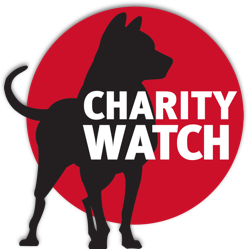Millions of donors regularly search online for ratings of charities before making their giving decisions. This makes sense. Most of us have heard horror stories about charity frauds and scams and do not want to unknowingly fall victim to a similar scheme. Even legitimate charities registered with the IRS sometimes have exorbitantly high overhead, so many donors want to know not only if a charity is “legitimate,” but if it will use their donations efficiently and effectively by not overspending on fundraising and management.
Not All Charity Ratings Are the Same
Unfortunately, these good faith efforts to research charities before donating are sometimes all for naught. Online databases and nonprofit trade associations that offer ratings on thousands and thousands of charities typically use a combination of automation and crowdsourcing, which is what allows them to publish such large volumes of charity profiles and ratings.

When data is crowdsourced, this means that charities are uploading information about themselves to a website, such as descriptions of their programs and marketing materials like self-produced “impact” reports. Such information inherently lacks independence. What incentive would a charity have to upload unflattering information about itself? For purposes of computing a rating of a charity based on this information, the uploading of the data is often treated as an end unto itself. Charities are assigned higher ratings in exchange for uploading information, not based on how efficiently or effectively they are using donations, which is not independently analyzed or measured.

When charity ratings are automated, this is typically achieved by pulling unaudited figures from charity tax filings known as IRS Forms 990. With few exceptions, the financial reporting is taken at face value without the charity rater conducting an independent review to understand if the reported information is accurate, consistent, comparable, or complete, and making any necessary adjustments to make it so. The reliability of the ratings is only as good as the accuracy, consistency, comparability, and completeness of the reporting. In other words, garbage in, garbage out.
Accuracy, Consistency, Comparability, Completeness
Charity ratings that use automated methods to pull data from unaudited tax filings are unreliable for 4 primary reasons:
Accuracy: They don’t account for reporting errors, which are common. Charity tax filings are self-reported documents and are not required to be presented according to Generally Accepted Accounting Principles (GAAP). As a result, unflattering information may be omitted from a tax filing altogether, or information may be reported in the wrong lines or columns, distorting how efficiently it is operating.
Consistency: Charities are allowed to report the same activities in wildly different ways from one reporting year to the next. Some change their reporting methods just to look better to donors. Even if a charity has not improved the efficiency with which it is operating, it can make itself look more efficient in automated charity rating databases by simply changing how it reports certain activities, such as fundraising.
Comparability: Similarly, because charities have a lot of freedom to report similar activities, such as fundraising, in wildly different ways, one charity can appear to be operating vastly more efficiently than another. This is not because it is actually more efficient, but rather because it is intentionally reporting its financial activities in more flattering ways than other charities. Charities that are more honest or conservative in their financial reporting may be punished in the form of lower ratings simply for being more honest than other charities about how efficiently they are operating.
Completeness: Charities, especially larger ones, may operate more than one related legal entity, often with financial transactions flowing among them. Any single charity tax filing contains the financial activities of only one legal entity. Meaning, charity raters that pull numbers from the individual tax filings of charities may be disregarding significant fundraising and overhead costs absorbed by a charity’s related legal entities or may be counting the contributions a charity receives from itself (transferred from one legal entity to another) when computing its fundraising efficiency.

- There is no Nonprofit SEC, no federal government charity watchdog, and no investors who can sue if given false information.
- Charity reporting rules leave a lot of room for error and variation, which results in significant amounts of reporting that is incorrect, inconsistent, incomparable, and/or incomplete. Automated and crowdsourced charity ratings often amount to “garbage in, garbage out” as a result.
- The primary purpose of nonprofit trade associations is to amplify the marketing and fundraising capacity of charities. Their primary purpose is not to protect donors from charity frauds and scams, or to educate the donating public about misleading charity financial reporting or unethical charity fundraising tactics. Ratings published by such sources may not be thorough or independent enough to render them useful to many donors for purposes of making wise giving decisions for this reason.
Visit Our Process page to learn more about what factors CharityWatch considers during our analyses of charity audited financial statements, tax filings, and other information.



